Published: 20th March 2020 at 6:37 am. Posted in Blog.
With the hot weather returning and my time in the field becoming more and more limited, I’ve now got time to catch up on some blog posts from my trips over the Winter months. The first post is about my intense but fantastic visit to the iconic Kaziranga National park in Assam to photograph some of the endemic and endangered species of this incredible biodiversity hotspot.
About Kaziranga National Park:
Kaziranga National Park was first established in 1905 with the help of Mary Curzon, the wife of Viceroy Lord Curzon of Kedleston. As Vicereine of India, Mary held the highest official title in the Indian Empire that a woman could hold. It is said that when Mary visited the area to see rhinos she was unable to find even one and so persuaded her husband to take urgent measures to protect the vulnerable species. After the legislation was passed the Kaziranga Reserve Forest was created with an area of 232 km2. In 1985 Kaziranga became a UNESCO world heritage and is now one of India’s most famous tourist destinations, located on the edge of the Himalayan biodiversity hotspot in the state of Assam.
Now covering 430² km, Kaziranga is dominated by dense tropical forests, marshland and vast expanses of giant elephant grass, so called because they can grow tall enough to hide even the largest animals. The Brahmaputra river that winds it way through the flood plains is the lifeblood of the area and gives the national park its amazing biodiversity.
Kaziranga is home to the world’s largest population of Greater one-horned rhinoceros. Over 2200 rhinos inhabit the elephant grass meadows and dense forests; approximately 2/3rd of total world population. The National Park is also home to many other endemic and endangered animals such as Hoolock Gibbons; India’s only ape, Indian Elephants, Sloth Bears, Wild water buffalo and swamp deer. An increase in the tiger population every year has also meant that Kaziranga was declared as a Tiger Reserve in the 2006 and it is now purported to have the highest density of tigers anywhere in the world.
Along with the wide range of mammal species the park is also recognised as an important area for birds. Rare birds such as the ferruginous duck, lesser white-fronted goose, Baer’s pochard, adjutant storks, black-necked storks, and Asian Openbill storks migrate here from the Central Asia during the winter.
Greater One Horned Rhinoceros:
The Greater one-horned rhinoceros (Rhinoceros unicornis) also known as the Indian rhinoceros , and the great Indian rhinoceros, is a species of rhino native to the Indian subcontinent.
Rhinos were my main focus during the visit and they didn’t disappoint! Although the Rhinos spent much of their time hidden away deep in the Jungle, they came out onto the open grassy plains to feed offering some fantastic photographic opportunities.
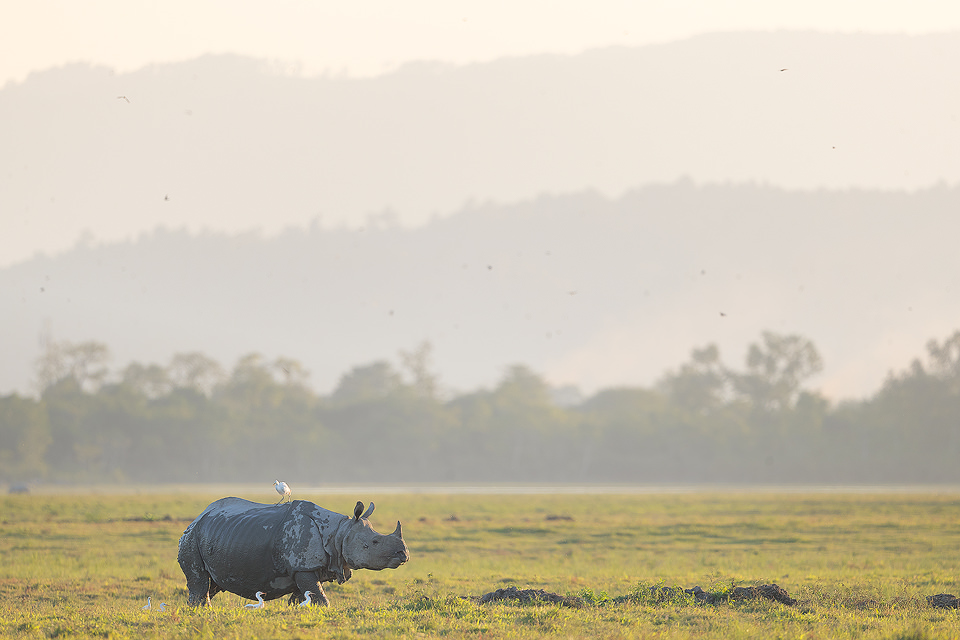
Indian rhinoceros, in the grasslands beneath the Himalayan foothills.
The greater one-horned rhino is the largest of the rhino species, a title shared with the African White Rhinoceros. Indian rhinoceros’ were once widespread across much of the Indian sub-continent, but as the human population increased, the rhino population grew close to extinction after excessive hunting and conflict with local farmers. By the start of the 20th century, it was estimated that just 200 greater one-horned rhinos remained in the wild.
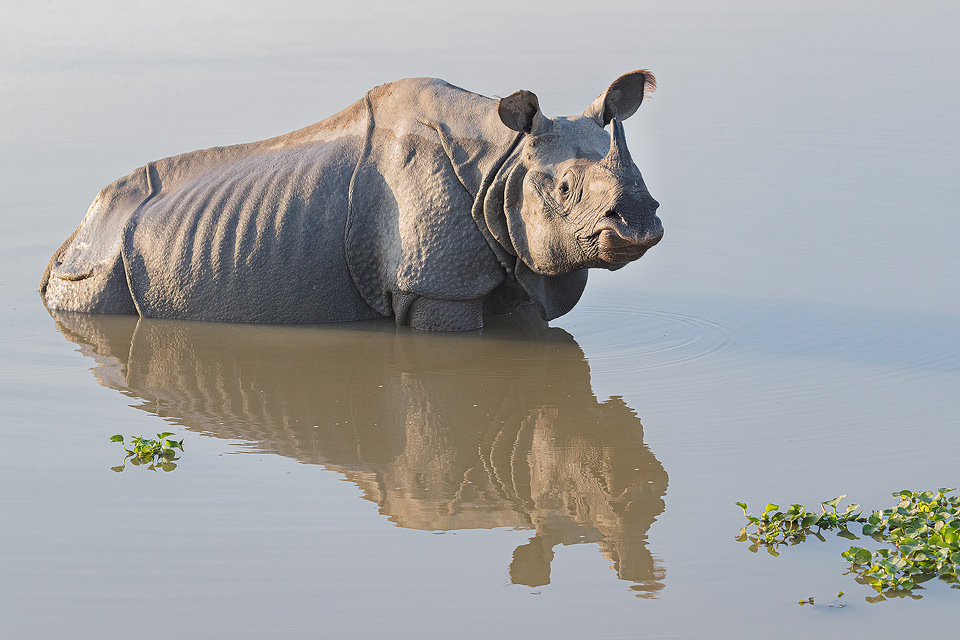
Indian rhinoceros, cooling off in a grassland pool.
The incredible recovery of the greater one-horned rhino from the brink of extinction is one of the greatest conservation success stories in the world. Through strict protection from poaching and land management by wildlife authorities, the great Indian rhinoceros was brought back from the almost certain extinction. Today the population is estimated at 3,500 rhinos, found in northeastern India and the grasslands of Nepal, particularly in Kaziranga National Park and Chitwan.
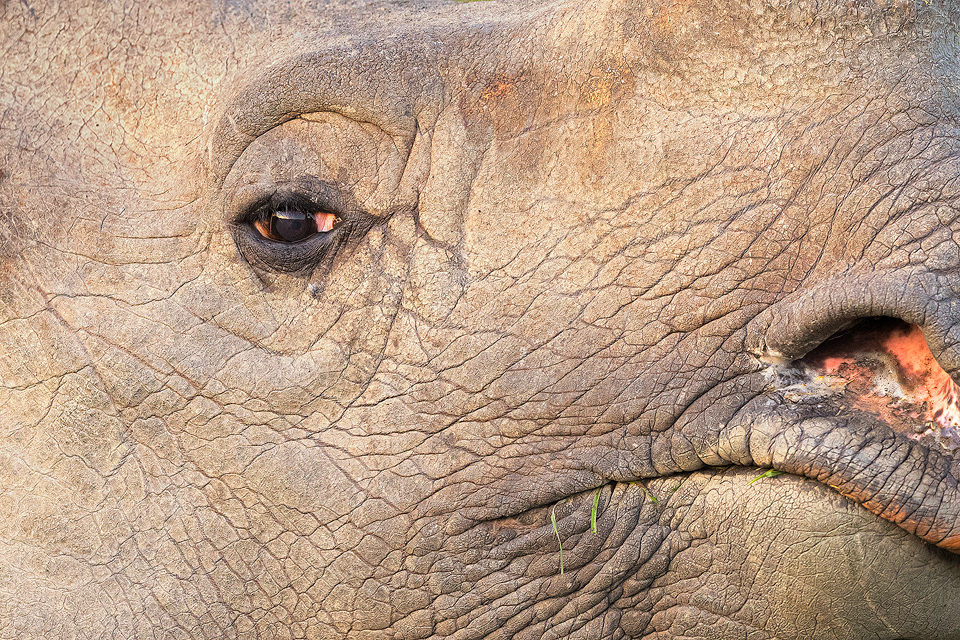
Greater one-horned rhinoceros close up, Assam, India
These giants can be identified by their single horns, which can grow up to about 25 inches long, thought to be the origin of the unicorn legend. Their thick grey hide with deep skin folds, makes them look as though they are wearing a suit of armour.
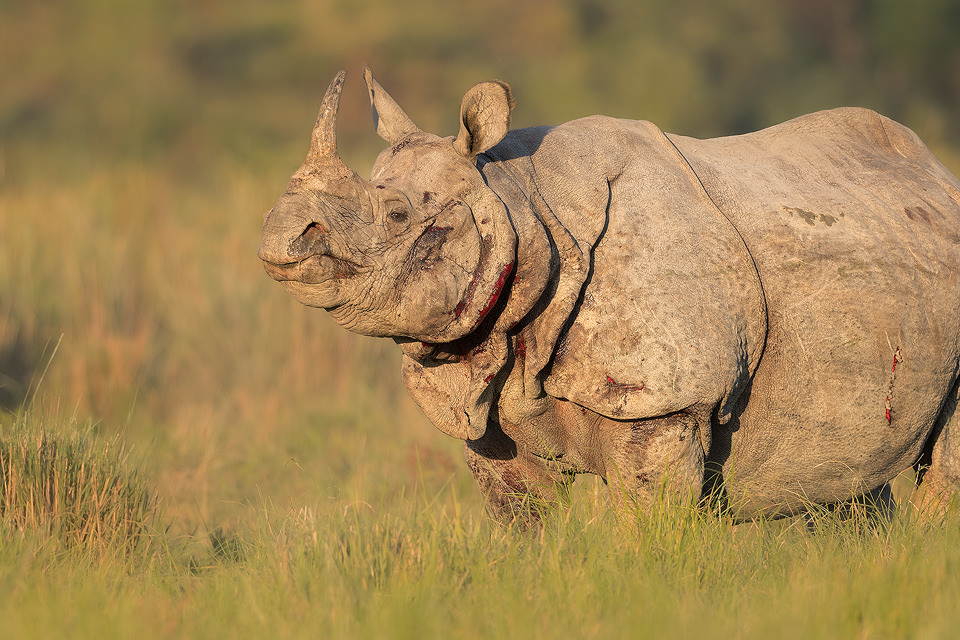
Great Indian Rhinoceros covered in deep cuts and after a long and bloody battle with a rival, Assam, India. Thanks to their enormous size and thick armour-like hide, rhinos have no natural predators. Despite this they are notoriously grumpy and easily spooked. When they feel threatened they tend to charge directly at whatever has scared them!
Wild Water Buffalo:
Water buffalo (Bubalus arnee) are large herbivores in the family Bovidae. Also known as Asian buffalo, Asiatic buffalo and wild Asian buffalo, they are native to the Indian subcontinent and Southeast Asia. Water buffalo have been listed as Endangered on the IUCN Red List since 1986. The remaining wild population is estimated at around 3,400 individuals, of which 3,100 are found in India; primarily in Assam where Kaziranga National Park is a stronghold. The wild water buffalo is the ancestor of the domestic water buffalo, however it is much larger and heavier weighing 600 to 1,200 kg. Asiatic Buffalo are one of the heaviest living wild bovids, second only to the Gaur which is also found in India.
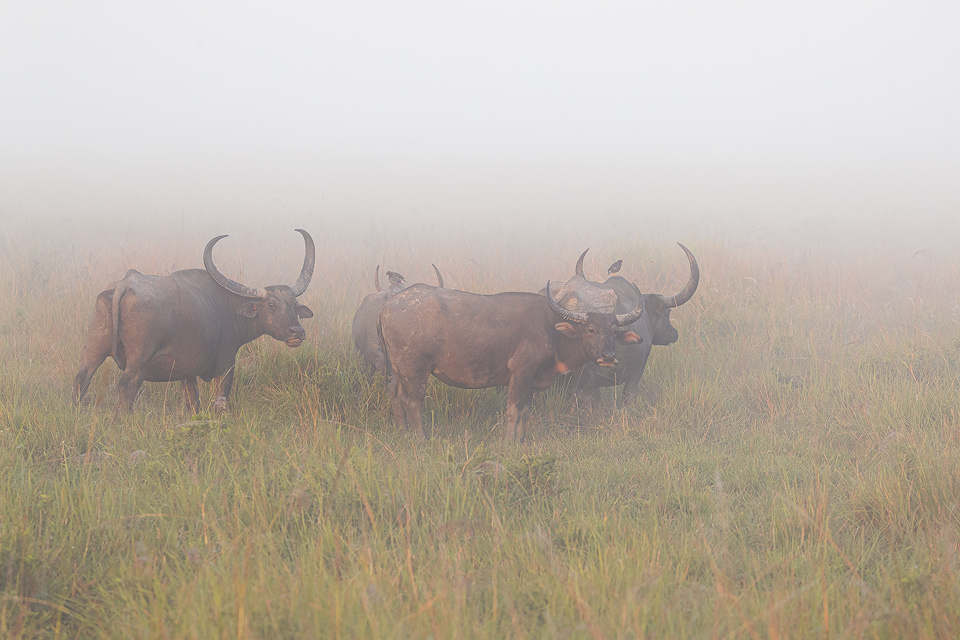
A group of wild Asian buffalo in dawn fog. Kaziranga National Park, Assam, India.
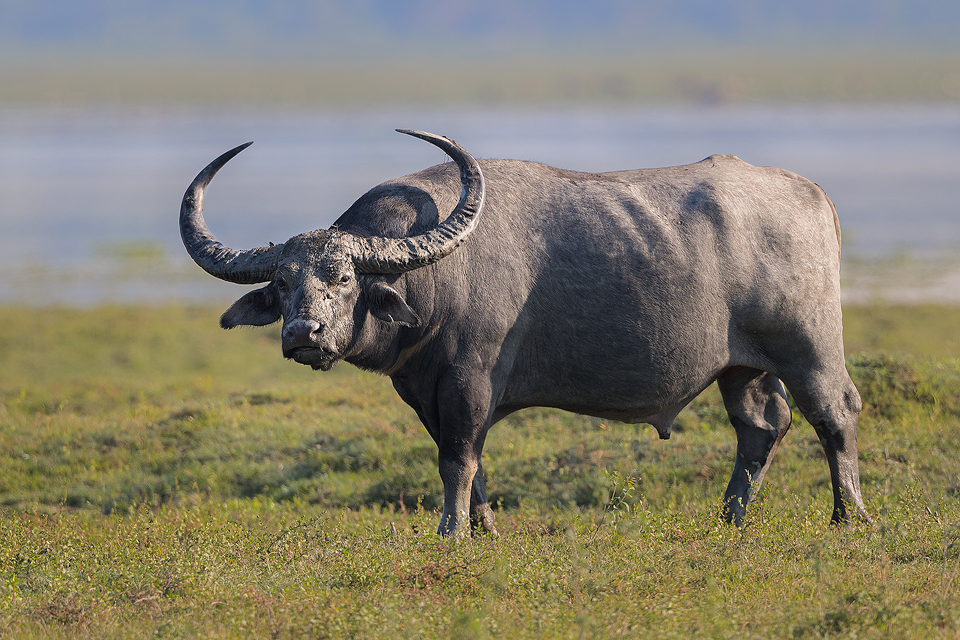
A huge Wild Water Buffalo Bull in the open plains of Kaziranga National Park, Assam, India.
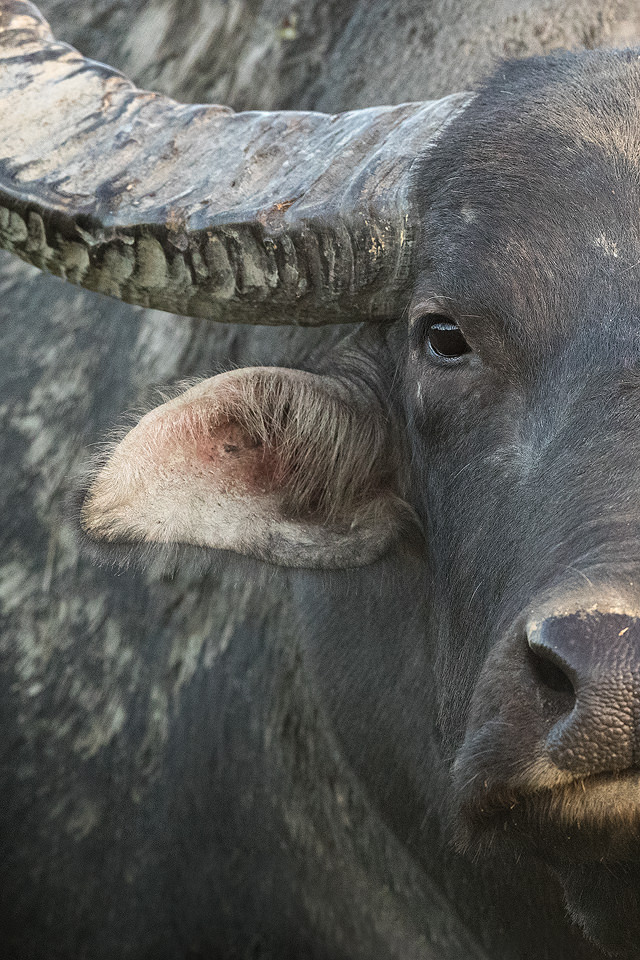
Wild Asiatic buffalo, Assam. This huge bull was standing just a few feet from the jeep so I took the opportunity to capture this close up portrait using my 500m lens. Assam is the best place in India to see these endangered beasts, having more than 90% of the total world population!
Hog Deer:
Indian Hog deers (Axis porcinus) were once widespread and densely populated throughout their range. Between 1991 and 2012, hog deer in southeast Asia declined by over 90% thanks to habitat loss, hunting and changes in farming practices. The remaining isolated populations now only inhabit fractions of their former range, with one particular stronghold in Kaziranga National Park, India. Where they are estimated to number over 15,000. These small deer weigh 30-50kg and have a life span of between 10-20 years. Hog deer’s numbers are gradually decreasing in their natural range and they are now classified as Endangered on the IUCN Red List.

Backlit female Hog Deer in the grasslands of Kaziranga National Park, Assam, India.
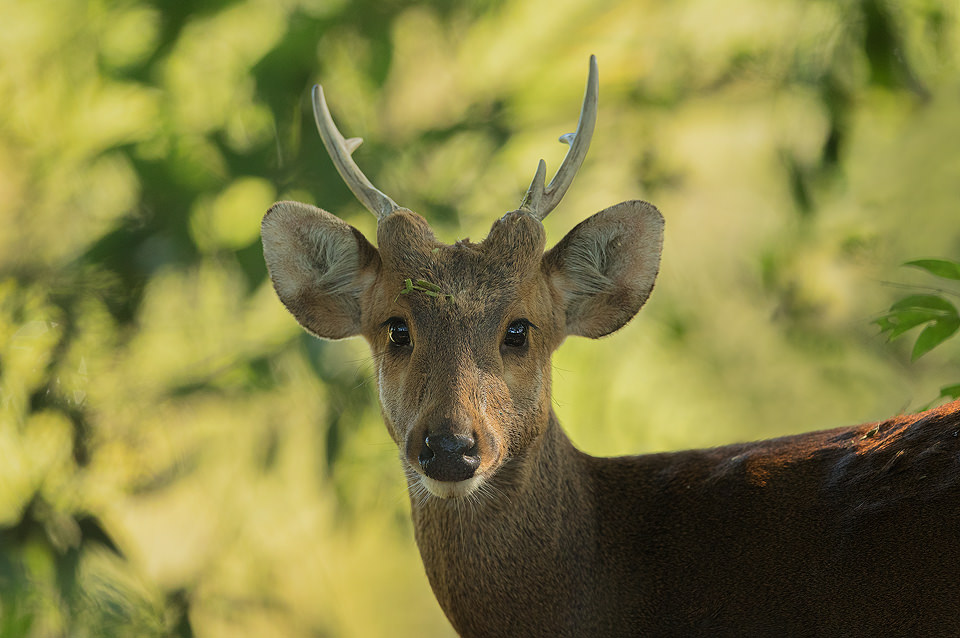
Portrait of a young male Hog Deer, Assam, India.
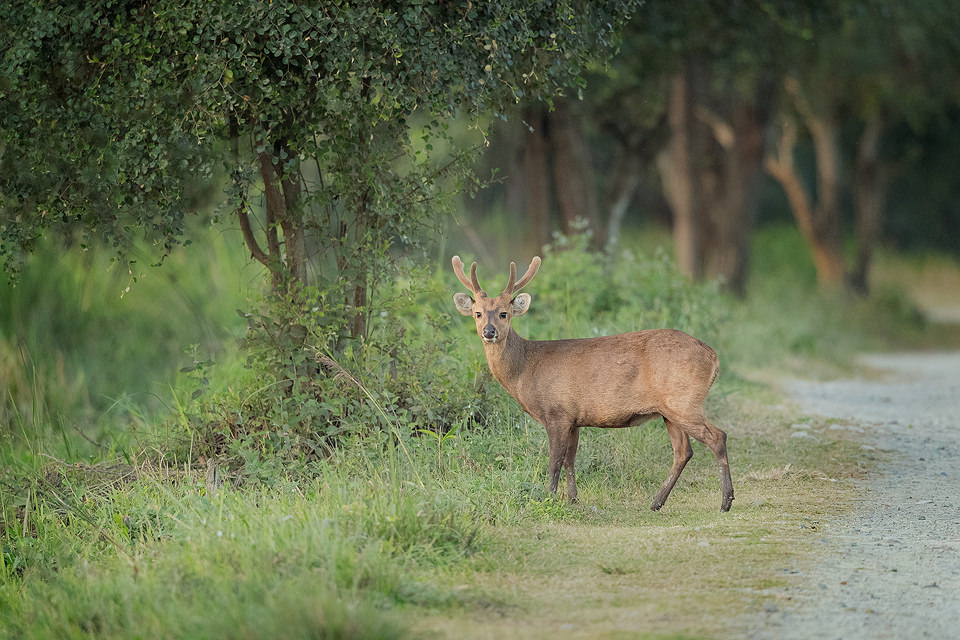
A Hog Deer Stag crosses the track at dusk, pausing to look towards our jeep.
Great Hornbill:
The Great Hornbill (Buceros bicornis) also known as the Great Indian hornbill, the concave-casqued hornbill or the great pied hornbill, is one of the largest members of the hornbill family (Bucerotidae) found in Asia. In India Great Indian hornbills are found only in the Western ghats and the dense rainforests of the North East. Like many other hornbills, Great pied hornbills are predominantly frugivorous, but they will prey on small mammals, reptiles and even other birds.
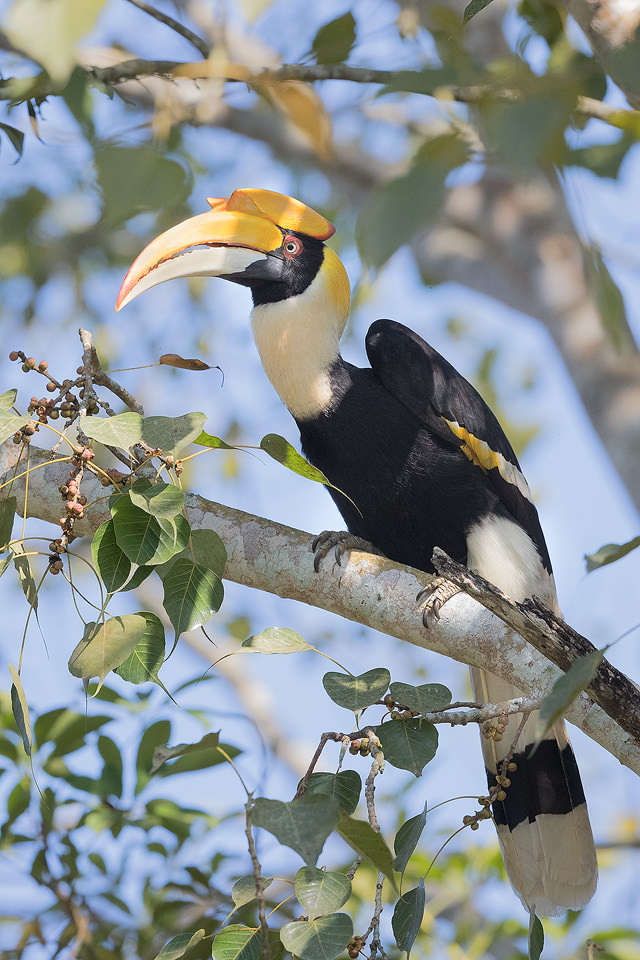
Great hornbill in early afternoon sunshine. Assam, India. These impressive size and bright colours of these stunning birds have made them important in many tribal cultures and rituals throughout Asia. The hornbill’s diet consists mainly of fruit but they will also eat insects, crustaceans, small reptiles, mammals and small birds.

